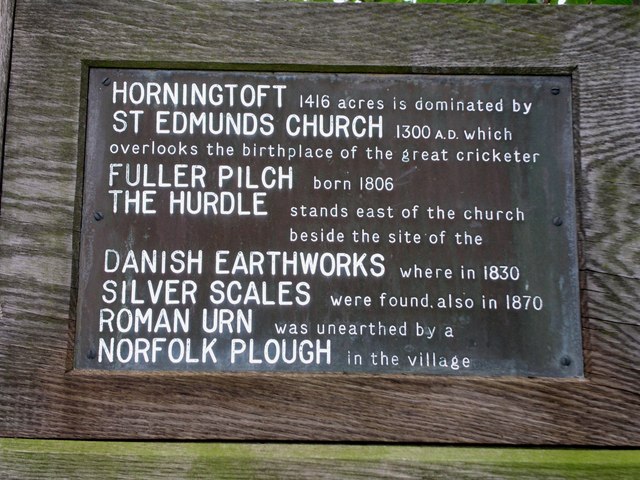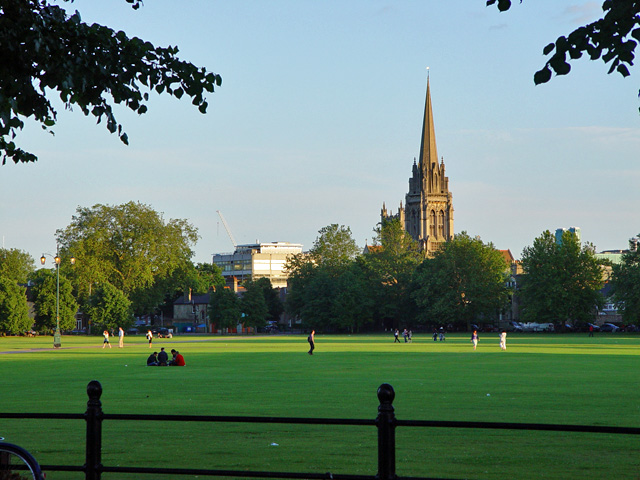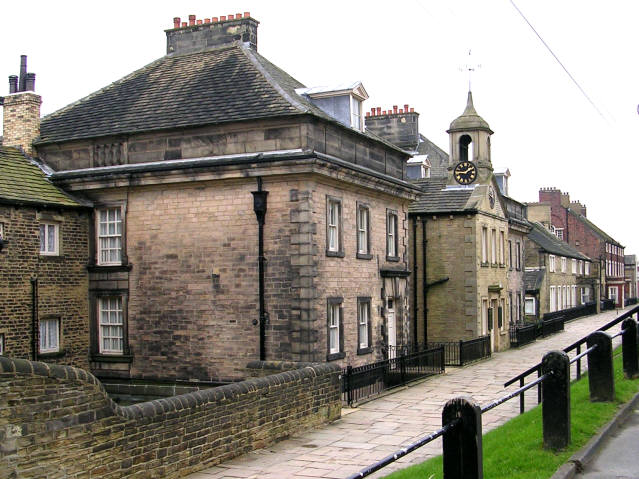|
Players Cricket Team
The Players appeared in first-class cricket between 1806 and 1962, nearly always in the showcase Gentlemen v Players matches against the Gentlemen, though Players teams have occasionally played against touring sides too. Teams called the Players have played in a few minor matches. The inaugural Gentlemen v Players fixture was held at Lord's on 7, 8 and 9 July 1806, the Gentlemen winning by an innings and 14 runs. The fixture was played in most seasons since then, often in two or more instalments, until the last one at North Marine Road, Scarborough on 8, 10 and 11 September 1962, the Players winning by 7 wickets. The Players were cricketers with professional status, whereas the Gentlemen were termed amateurs who nominally claimed expenses for playing. Outstanding members of Players teams have included Fuller Pilch, Wilfred Rhodes, Jack Hobbs, Len Hutton and Fred Trueman Frederick Sewards Trueman, (6 February 1931 – 1 July 2006) was an English cricketer who played for Y ... [...More Info...] [...Related Items...] OR: [Wikipedia] [Google] [Baidu] |
First-class Cricket
First-class cricket, along with List A cricket and Twenty20 cricket, is one of the highest-standard forms of cricket. A first-class match is one of three or more days' scheduled duration between two sides of eleven players each and is officially adjudged to be worthy of the status by virtue of the standard of the competing teams. Matches must allow for the teams to play two innings each, although in practice a team might play only one innings or none at all. The etymology of "first-class cricket" is unknown, but it was used loosely before it acquired official status in 1895, following a meeting of leading English clubs. At a meeting of the Imperial Cricket Conference (ICC) in 1947, it was formally defined on a global basis. A significant omission of the ICC ruling was any attempt to define first-class cricket retrospectively. That has left historians, and especially statisticians, with the problem of how to categorise earlier matches, especially those played in Great Britain be ... [...More Info...] [...Related Items...] OR: [Wikipedia] [Google] [Baidu] |
1806 English Cricket Season
1806 was the 20th season of cricket in England since the foundation of Marylebone Cricket Club (MCC). The first two Gentlemen v Players matches took place, but the fixture was not played again until 1819. Honours * Most runsNote that scorecards created in the first quarter of the 19th century are not necessarily accurate or complete; therefore any summary of runs, wickets or catches can only represent the known totals and computation of averages is ineffectual. – William Lambert 276 (HS 64) * Most wickets – Thomas Howard 21 Events * The inaugural Gentlemen v Players match was held. * With the Napoleonic War continuing, loss of investment and manpower impacted cricket and only 7 first-class matches have been recorded in 1806: ** 16–18 June: All-England v Hampshire @ Lord's Old GroundHaygarth, p.315. ** 30 June: All-England v Surrey @ Lord's Old Ground ** 7–9 July: Gentlemen v Players @ Lord's Old Ground ** 14–16 July: Surrey v All-England @ Moulsey Hurst ** 21 & 25 Jul ... [...More Info...] [...Related Items...] OR: [Wikipedia] [Google] [Baidu] |
1962 English Cricket Season
1962 was the 63rd season of County Championship cricket in England. It was also the last season to feature the venerable Gentlemen v Players fixture: as a result of the distinction between amateurs ("Gentlemen") and professionals ("Players") being abolished following the end of the season, all first-class cricketers became nominally professional (or "Players"). Yorkshire won the County Championship, and England easily defeated an inexperienced Pakistan team. Honours *Test Series – England 4–0 Pakistan; one match drawn *County Championship – Yorkshire *Minor Counties Championship – Warwickshire II *Second XI Championship – Worcestershire II *Wisden Cricketers of the Year – Don Kenyon, Mushtaq Mohammad, Peter Parfitt, Phil Sharpe, Fred Titmus Pakistani tour England easily beat an inexperienced Pakistan side 4–0 with one match drawn: * 1st Test at Edgbaston – England won by an innings and 24 runs''Wisden 1963'', pp. 314–315. * 2nd Test at Lord's – Englan ... [...More Info...] [...Related Items...] OR: [Wikipedia] [Google] [Baidu] |
Gentlemen V Players
Gentlemen v Players was a long-running series of English first-class cricket matches. Two matches were played in 1806, but the fixture was not played again until 1819. It became an annual event, usually played at least twice each season, except for the years 1826, 1828, 1915–1918 (due to World War I) and 1940–1945 (due to World War II). In essence, it was a match between teams consisting of amateur ("Gentlemen") and professional cricketers ("Players") that reflected the English class structure of the 19th century: the Players were working class cricketers who earned their living through the game, whilst the Gentlemen were middle- and upper-class cricketers, usually products of the public school system, who were unpaid. For the matches, the Players were paid wages by their county clubs and/or fees by the match organisers, while the Gentlemen nominally only claimed expenses. However, while rules to distinguish amateurs from professionals were established by the Maryleb ... [...More Info...] [...Related Items...] OR: [Wikipedia] [Google] [Baidu] |
Gentlemen Cricket Team
The Gentlemen appeared in first-class cricket between 1806 and 1962, always in the showcase Gentlemen v Players matches against the Players. Teams called the Gentlemen have played in a few minor matches. The inaugural Gentlemen v Players fixture was held at Lord's on 7, 8 and 9 July 1806, the Gentlemen winning by an innings and 14 runs. The fixture was played in most seasons since then, often in two or more instalments, until the last one at North Marine Road, Scarborough on 8, 10 and 11 September 1962, the Players winning by 7 wickets. The Gentlemen were cricketers with amateur status, who nominally claimed expenses for playing, whereas the Players were paid professionals. The outstanding figure in Gentlemen cricket was W. G. Grace William Gilbert Grace (18 July 1848 – 23 October 1915) was an English amateur cricketer who was important in the development of the sport and is widely considered one of its greatest players. He played first-class cricket for a record-equal . ... [...More Info...] [...Related Items...] OR: [Wikipedia] [Google] [Baidu] |
Lord's Cricket Ground
Lord's Cricket Ground, commonly known as Lord's, is a cricket venue in St John's Wood, London. Named after its founder, Thomas Lord, it is owned by Marylebone Cricket Club (MCC) and is the home of Middlesex County Cricket Club, the England and Wales Cricket Board (ECB), the European Cricket Council (ECC) and, until August 2005, the International Cricket Council (ICC). Lord's is widely referred to as the ''Home of Cricket'' and is home to the world's oldest sporting museum. Lord's today is not on its original site; it is the third of three grounds that Lord established between 1787 and 1814. His first ground, now referred to as Lord's Old Ground, was where Dorset Square now stands. His second ground, Lord's Middle Ground, was used from 1811 to 1813 before being abandoned to make way for the construction through its outfield of the Regent's Canal. The present Lord's ground is about north-west of the site of the Middle Ground. The ground can hold 31,100 spectators, the capacity h ... [...More Info...] [...Related Items...] OR: [Wikipedia] [Google] [Baidu] |
North Marine Road, Scarborough
North Marine Road Ground, formerly known as Queen's, is a cricket ground in Scarborough, North Yorkshire, England. It is the home of Scarborough Cricket Club which hosts the Scarborough Festival and the Yorkshire County Cricket Club plays a series of fixtures in the second half of the season each year. The current capacity is 11,500, while its record attendance is the 22,946 who watched Yorkshire play Derbyshire in 1947. The two ‘ends’ are known as the Peasholm Park End and the Trafalgar Square End. History Cricket was first staged at the ground in 1863, when tenancy of Jackson's field on North Marine Road was obtained, matches having been played at Castle Hill in Scarborough since 1849. Yorkshire has played there since 1878, when MCC beat Yorkshire by 7 wickets. The first County Championship game was held there in 1896, when Yorkshire beat Leicestershire by 162 runs. With the demise of the other 'out' grounds, Scarborough is the only regular venue for county cricket i ... [...More Info...] [...Related Items...] OR: [Wikipedia] [Google] [Baidu] |
Amateur Status In First-class Cricket
Amateur status had a special meaning in English cricket. The amateur in this context was not merely someone who played cricket in his spare time but a particular type of first-class cricketer who existed officially until 1962, when the distinction between amateurs and professionals was abolished and all first-class players became nominally professional. Distinctions between amateur and professional status On the face of it, the distinctions between amateurs and professionals in first-class cricket were their availability and their means of remuneration. The professional cricketer received a wage from his county club or, if he went on a tour, a contracted fee paid by the tour organiser. In both cases, there was the possibility of bonuses being earned. The amateur ''in theory'' received expenses only, again paid either by his county club or a tour organiser. Professionals were full-time players during the cricket season and would mostly seek alternative employment in the winter mo ... [...More Info...] [...Related Items...] OR: [Wikipedia] [Google] [Baidu] |
Fuller Pilch
Fuller Pilch (17 March 1804 – 1 May 1870) was an English first-class cricketer, active from 1820 to 1854. He was a right-handed batsman who bowled at a slow pace with a roundarm action. Pilch played in a total of 229 first-class matches for an assortment of teams, but mostly for Norfolk and Kent. He is remembered as a pioneer of forward play in batting, and especially for a shot called "Pilch's poke". Early life Pilch was born at Horningtoft, Norfolk, the third son of Nathaniel Pilch and his wife Frances (née Fuller). They had been married at Brisley and returned to live there when Pilch was young. His father was a cobbler and Pilch himself became a tailor. He followed in the footsteps of his two elder brothers, Nathaniel and William, and became a professional cricketer. Cricket career Pilch's first appearance at Lord's was a three-day match in July 1820, playing for Norfolk. He then went to Sheffield to play cricket and earn his living as a tailor. By the late 1820s, he h ... [...More Info...] [...Related Items...] OR: [Wikipedia] [Google] [Baidu] |
Wilfred Rhodes
Wilfred Rhodes (29 October 1877 – 8 July 1973) was an English professional cricketer who played 58 Test matches for England between 1899 and 1930. In Tests, Rhodes took 127 wickets and scored 2,325 runs, becoming the first Englishman to complete the double of 1,000 runs and 100 wickets in Test matches. He holds the world records both for the most appearances made in first-class cricket (1,110 matches), and for the most wickets taken (4,204). He completed the double of 1,000 runs and 100 wickets in an English cricket season a record 16 times. Rhodes played for Yorkshire and England into his fifties, and in his final Test in 1930 was, at 52 years and 165 days, the oldest player who has appeared in a Test match. Beginning his career for Yorkshire in 1898 as a slow left arm bowler who was a useful batsman, Rhodes quickly established a reputation as one of the best slow bowlers in the world. However, by the First World War he had developed his batting skills to the extent ... [...More Info...] [...Related Items...] OR: [Wikipedia] [Google] [Baidu] |
Jack Hobbs
Sir John Berry Hobbs (16 December 1882– 21 December 1963), always known as Jack Hobbs, was an English professional cricketer who played for Surrey from 1905 to 1934 and for England in 61 Test matches between 1908 and 1930. Known as "The Master", he is widely regarded as one of the greatest batsmen in the history of cricket. He is the leading run-scorer and century-maker in first-class cricket, with 61,237 runs and 197 centuries. A right-handed batsman and an occasional right-arm medium pace bowler, Hobbs also excelled as a fielder, particularly in the position of cover point. Hobbs was named as one of the five ''Wisden'' Cricketers of the Century alongside Sir Donald Bradman, Sir Garfield Sobers, Shane Warne, and Sir Viv Richards. Born into poverty in 1882, Hobbs wished from an early age to pursue a career in cricket. His early batting was undistinguished, but a sudden improvement in 1901 brought him to the attention of local teams. In 1903, he successfully applied to jo ... [...More Info...] [...Related Items...] OR: [Wikipedia] [Google] [Baidu] |
Len Hutton
Sir Leonard Hutton (23 June 1916 – 6 September 1990) was an English cricketer. He played as an opening batsman for Yorkshire County Cricket Club from 1934 to 1955 and for England in 79 Test matches between 1937 and 1955. ''Wisden Cricketers' Almanack'' described him as "one of the greatest batsmen in the history of cricket". He set a record in 1938 for the highest individual innings in a Test match in only his sixth Test appearance, scoring 364 runs against Australia, a milestone that stood for nearly 20 years (and remains an England Test record). Following the Second World War, he was the mainstay of England's batting. In 1952, he became the first professional cricketer of the 20th century to captain England in Tests; under his captaincy England won the Ashes the following year for the first time in 19 years. Marked out as a potential star from his teenage years, Hutton made his debut for Yorkshire in 1934 and quickly established himself at county level. By 1937, he was ... [...More Info...] [...Related Items...] OR: [Wikipedia] [Google] [Baidu] |




